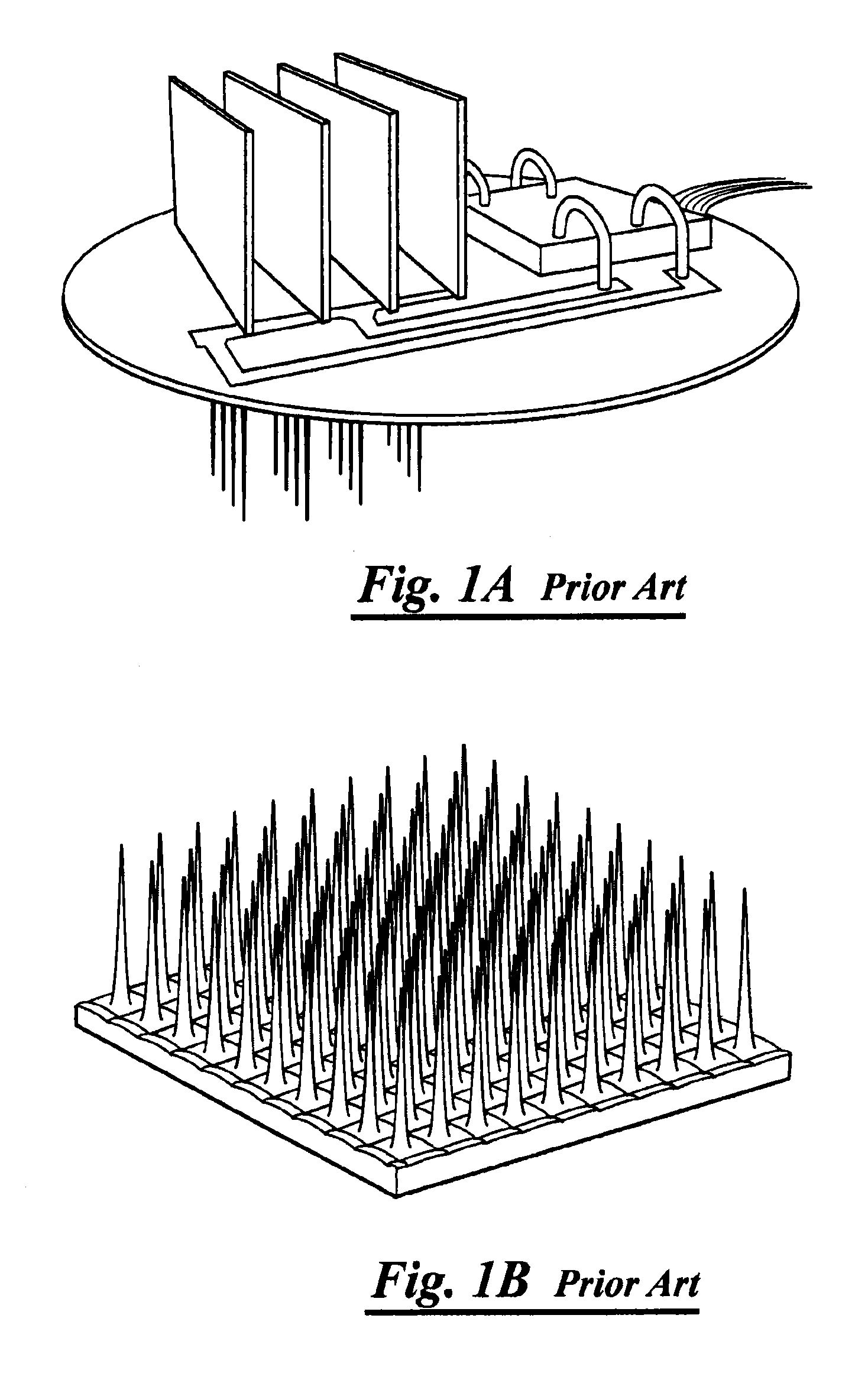Brain Machine Interface Device
a brain machine and interface technology, applied in the field of brain machine interface devices, can solve the problems of affecting their functionality and longevity, devices cannot be used to monitor deep structures or be distributed across or within the brain, and monolithic design not only significantly limits their usefulness, but also has several detrimental characteristics
- Summary
- Abstract
- Description
- Claims
- Application Information
AI Technical Summary
Benefits of technology
Problems solved by technology
Method used
Image
Examples
Embodiment Construction
[0043]Presently preferred embodiments of the invention are shown in the above-identified figures and described in detail below. In describing the preferred embodiments, like or identical reference numerals are used to identify common or similar elements. The figures are not necessarily to scale and certain features and certain views of the figures may be shown exaggerated in scale or in schematic in the interest of clarity and conciseness.
[0044]Referring now to the drawings and in particular to FIG. 2, shown therein and designated by a reference numeral 10 is a distributed real-time wireless neural interface constructed in accordance with the present invention. The neural interface 10 is capable of overcoming the limitations inherent in current state-of-the-art monolithic neural interfaces. The neural interface 10 includes a distributed array of independent wireless single-channel extracellular recording probes 12. Only five of the probes 12 are shown for purposes of brevity. Each i...
PUM
 Login to View More
Login to View More Abstract
Description
Claims
Application Information
 Login to View More
Login to View More - R&D
- Intellectual Property
- Life Sciences
- Materials
- Tech Scout
- Unparalleled Data Quality
- Higher Quality Content
- 60% Fewer Hallucinations
Browse by: Latest US Patents, China's latest patents, Technical Efficacy Thesaurus, Application Domain, Technology Topic, Popular Technical Reports.
© 2025 PatSnap. All rights reserved.Legal|Privacy policy|Modern Slavery Act Transparency Statement|Sitemap|About US| Contact US: help@patsnap.com



